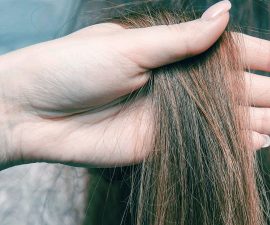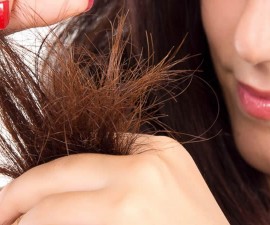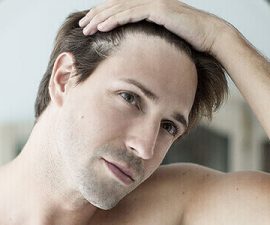Thinning hair on the top of the head is quite common, and it can affect anyone (both men and women). But it’s not always easy to find the underlying cause of the problem. It can be attributed by a number of different causes, from mild condition (such as stress in telogen effluvium) to a genetic trait that is more difficult to treat (such as male and female pattern hair loss).
Involutional alopecia
Hair follicles grow everywhere ‘not only on your scalp’, except soles of feet and palms of hands. Anyone can lose hair over the course of lifetime. However, some have it sooner than later.
Your hair is made up of keratin, a kind of protein. Even this protein is the most component of your hair follicle. Keratin is made in the outer layer of the skin.
The phase of when hair grows is called anagen. But a hair follicle doesn’t grow all the time. Eventually, it will go into a natural life cycle called telogen (resting phase).
Anagen can take years, about 6-7 years or maybe more. Before hair follicle goes into telogen phase, there is also a phase called catagen (transition phase). In the end of telogen phase, old hair will fall out and a new hair grows – then another anagen phase begins.
But normally, hair follicles on your scalp will not go into resting phase at the same time. Most of them go with growing phase, and only in a small amount with resting phase. So you usually will not notice a significant hair loss, though we can normally lose about 100 hairs each day.
One of possible cause for thinning hair on top head is involutional alopecia. Typically, it is more noticeable in older adults and seniors. It is a natural hair loss condition that occurs gradually with age.
Involutional alopecia can affect all over the scalp, though sometimes it may also cause more visible thinning hair in certain area of the scalp, such as on the crown. Since it is a natural part of aging, age can play a key role in causing the problem.
However, in some cases it may also be attributed by other underlying causes such as genetic and even diseases. In fact, not all older adults experience this hair loss.
In involutional alopecia, the phase of hair growth goes faster than usual. This causes a higher rate of thinning and fall-out of hair follicles. Over time, it can cause thinner or even shorter of hairs.
Androgenetic alopecia (pattern hair loss)
It is the most common form of hair loss in both men and women. Many times, it is also called male pattern baldness in men – and female pattern baldness in women.
Thinning hair is common in androgenetic alopecia. In men, thinner hair on the crown may be noticed. This symptom may also occur together with receding front hairline. Over time, these thinning spots can meet and form U-shape (like horseshoe shape).
In women, receding hairline is not common. Mostly, female pattern baldness occurs all over the scalp. However, sometimes the crown may look quite shinny.
Unfortunately, androgenetic alopecia is difficult to reverse. Even many times, it is incurable. Some treatments are available, but most of them are used to stop the progression of hair loss temporary. Once you stop taking the treatment, the problem can return.
Hair transplantation is one of the treatments. Unlike other treatments, it may provide a permanent result. Most men with male pattern baldness can take it, but not for women.
Most women with female pattern baldness are likely to experience thinning of hair all over the scalp, as noted before. There is usually no stable donor site, and therefore hair transplantation is not recommended!
Telogen effluvium
This kind of hair loss can also lead to thinning of hair on the crown. It can resemble the symptom of pattern hair loss, especially for female pattern baldness. Because it can make thinning hair all over the scalp, too!
Telogen effluvium can affect anyone. The good news, it can be treated easily. Even it may go away without any treatment since it is usually associated with reversible factors (especially traumatic events such as stress, poor diet, after giving birth, etc).
Sometimes it may also be caused by other factors such as after taking a major surgery and infection (particularly severe infection). But the problem is usually not permanent. Once the underlying cause is addressed, it is so probable to expect a complete remission.
It usually occurs in a few months later after a traumatic event. For instance, if it is caused by stress, you may notice it in the next 2-3 months.
There may be other types of thinning hair on top of head ‘not mentioned on this article’. But in many cases, the problem is associated with involutional alopecia, androgenetic alopecia, and telogen effluvium!
And before taking any treatment, first you need to find out the cause of the problem – at least you know the type of your hair loss! This is crucial to determine the most appropriate treatment you should take.
These kinds of thinning hair are usually not itchy. For types of hair loss that often come with itchy scalp, see this section!




